Every family household has a version of their own Filipino empanadas. For this special empanada, I developed a pork adobo filling that is saucy and flaky.
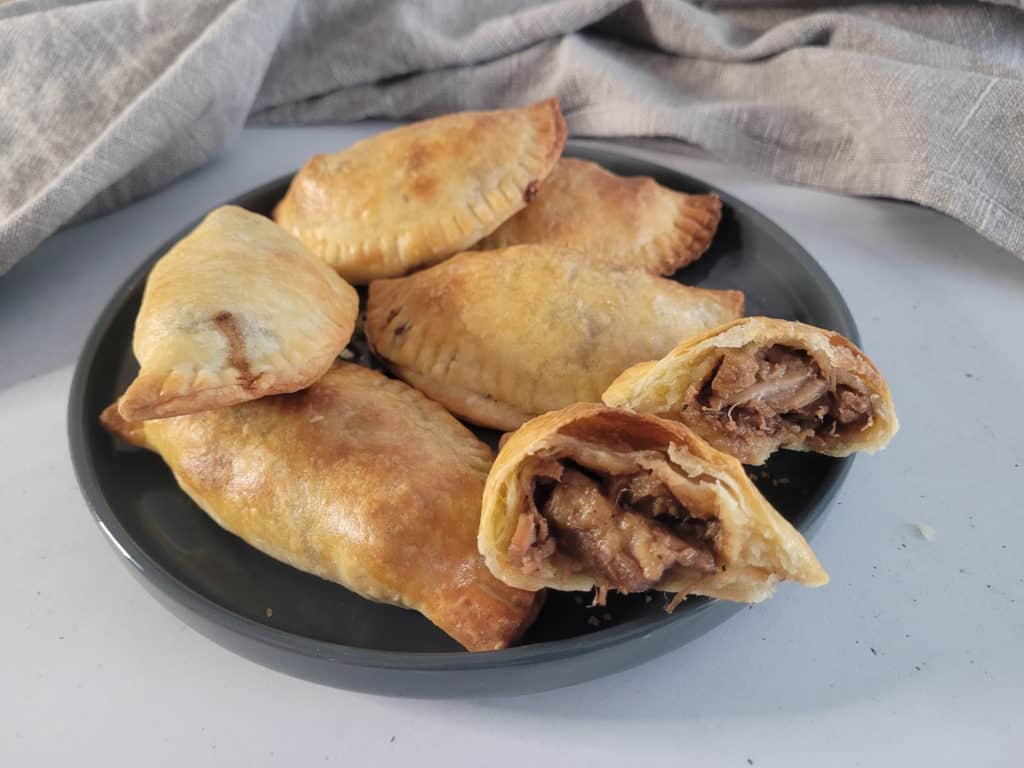
Update Disclosure: This post has been updated for one or more of the following reasons: easier reading, updated photos, clearer instructions, and just plain ol' improvements to the recipe (as noted).
Jump to:
What is Adobo?
Filipino adobo is usually made with pork or chicken. Before cooking, you marinate the meat with soy sauce. Then it simmers for a long time with bay leaves, garlic, black peppercorn, and some vinegar. If you want to try a more traditional version, check out this cast iron chicken adobo recipe!
The adobo empanada filling in this recipe honors this classic Filipino dish with slight tweaks to the recipe. Instead of peppercorns, I used crushed pepper because I didn't want to spend time picking out tiny bits of peppercorns that otherwise would end up in the empanadas. I added more sugar than I usually would to bridge the flavors of the sweet buttery pastry and the filling.
Ingredients
Here are the things you'll need to make adobo empanadas:
- Pork Belly
- Garlic Cloves
- Black Pepper
- Soy Sauce
- Cane Vinegar
- Water
- Bay Leaves
- Sugar
- Cornstarch
- All-Purpose Flour
- Salt
- Unsalted Butter
- Apple Cider Vinegar
- Eggs
Whew - That's a pretty extensive list! But it's what makes it all worth it!
Substitutes
- Pork Belly: Any fatty cut of pork will do such as pork neck or pork shoulder. You can also use a different type of meat. Chicken is another alternative to adobo dishes.
- Cane Vinegar: Typically you use cane vinegar in Filipino cooking, but if you don't have that you can use white vinegar.
Recipe Tips
- Watch the Dough: When you pulse the dough, you will notice that it will not clump together, but you need to ensure the texture is sandy so that the butter doesn't make massive holes in the empanadas when baking.
- Taste Test: Once you finish braising the adobo, check that it isn't too salty. If you find the adobo to be too salty, you can add more sugar.
- Refrigerate for Longer: If you have the time, place the cooled filling in the fridge to further cool overnight. This will help you handle the dough and filling better in the next stage, where you assemble Filipino empanadas.
- Sealing Empanadas: For a leak-proof seal, press down on the edges with a fork lightly dusted with flour. Then, pull the fork away from the empanada horizontally while continuing to press. Do not lift up the fork because that will pull the edge up, opening the seal.
How to Make Filipino Adobo Empanada
This Filipino adobo empanada recipe is for someone whose love language is feeding those they care about. There are multiple steps to be aware of so you should also set aside time for this recipe.
- Marinate the Pork Filling
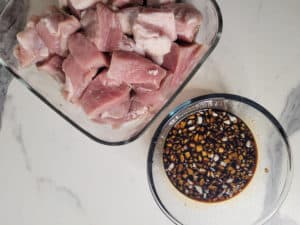
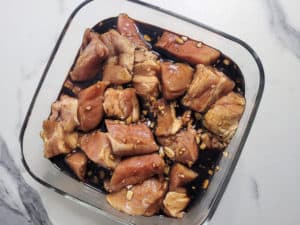
- Make the Dough
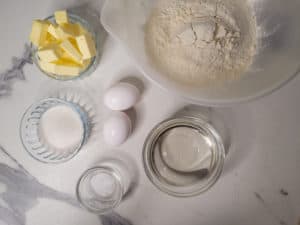
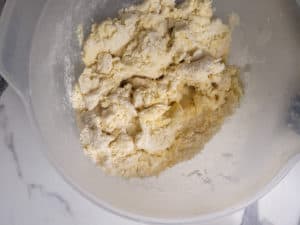
- Cook the Filling
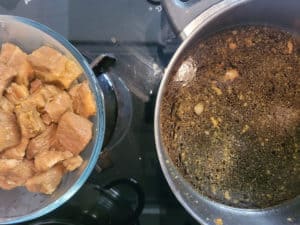
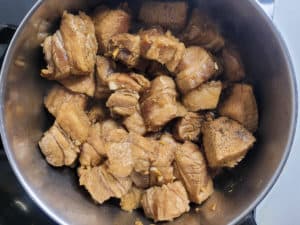
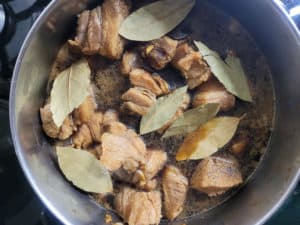
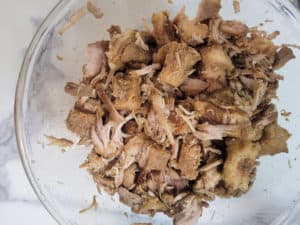
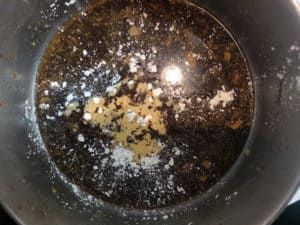
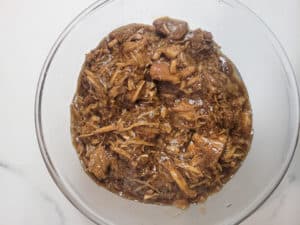
- Assemble the Empanada
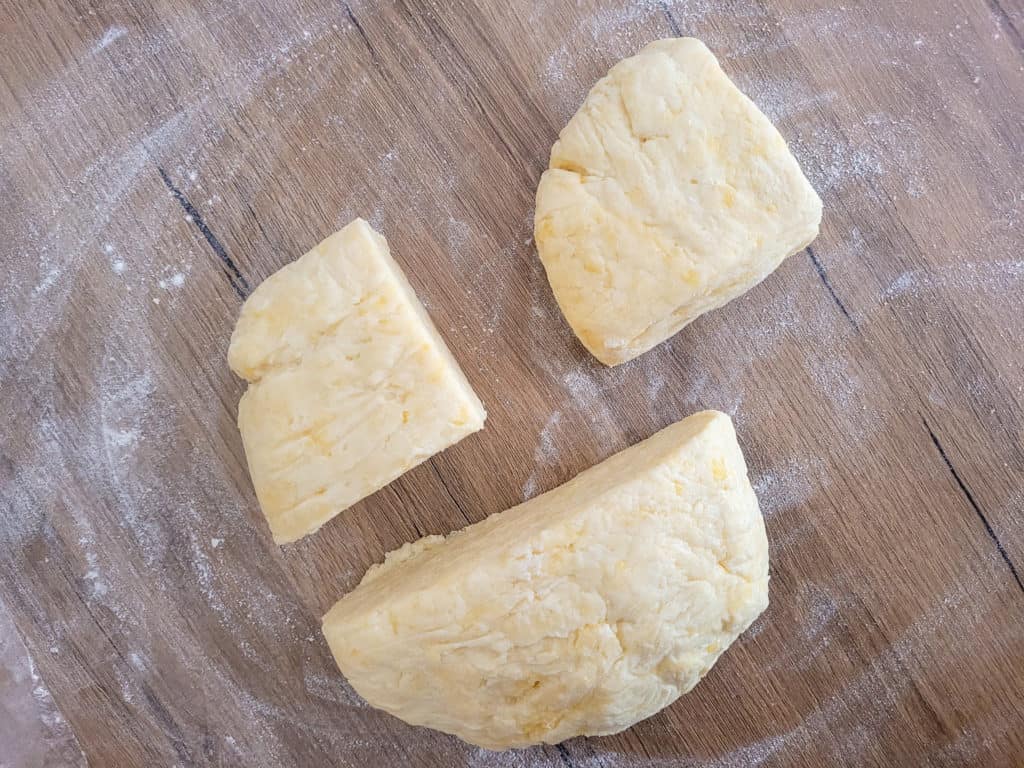
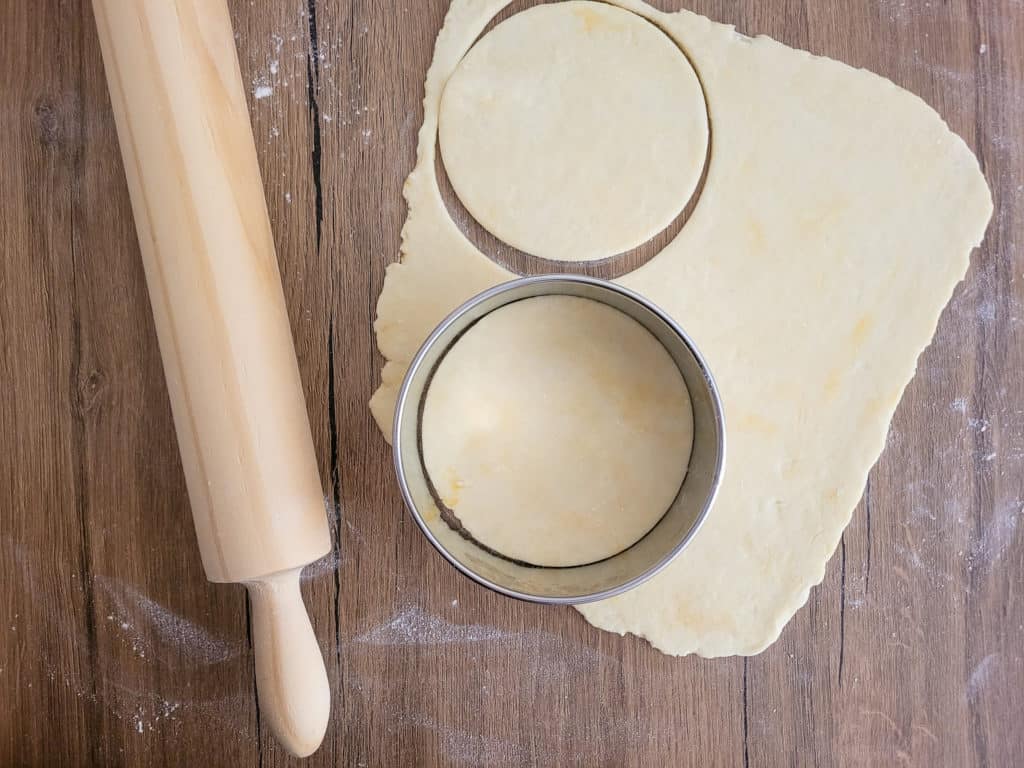
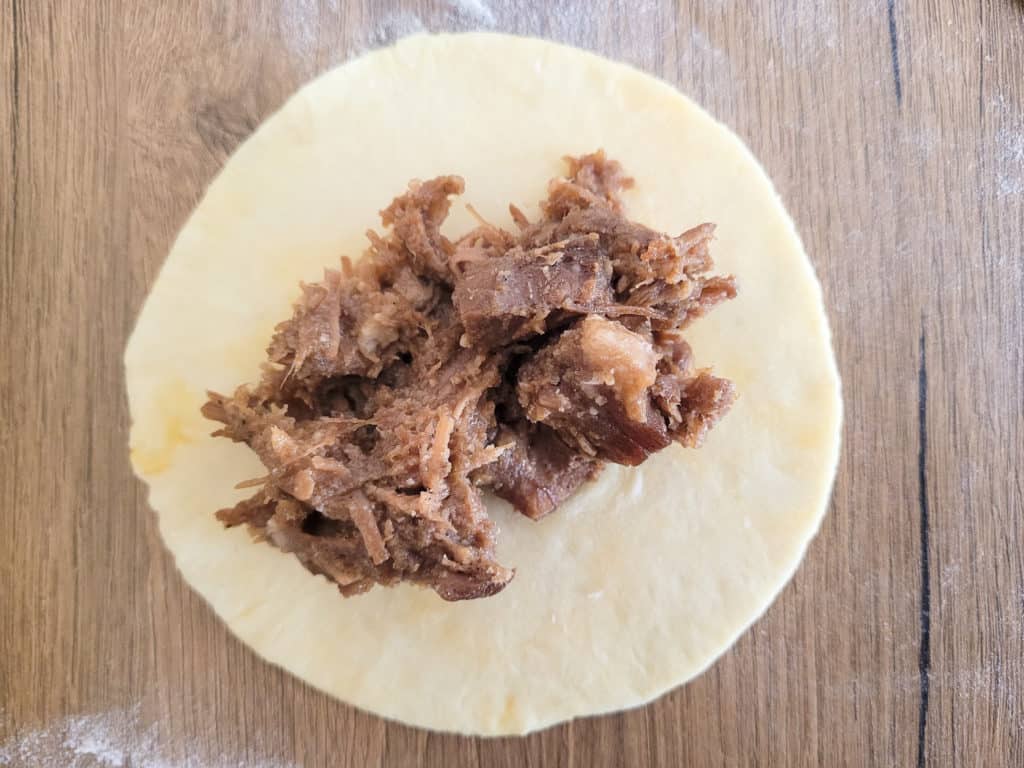
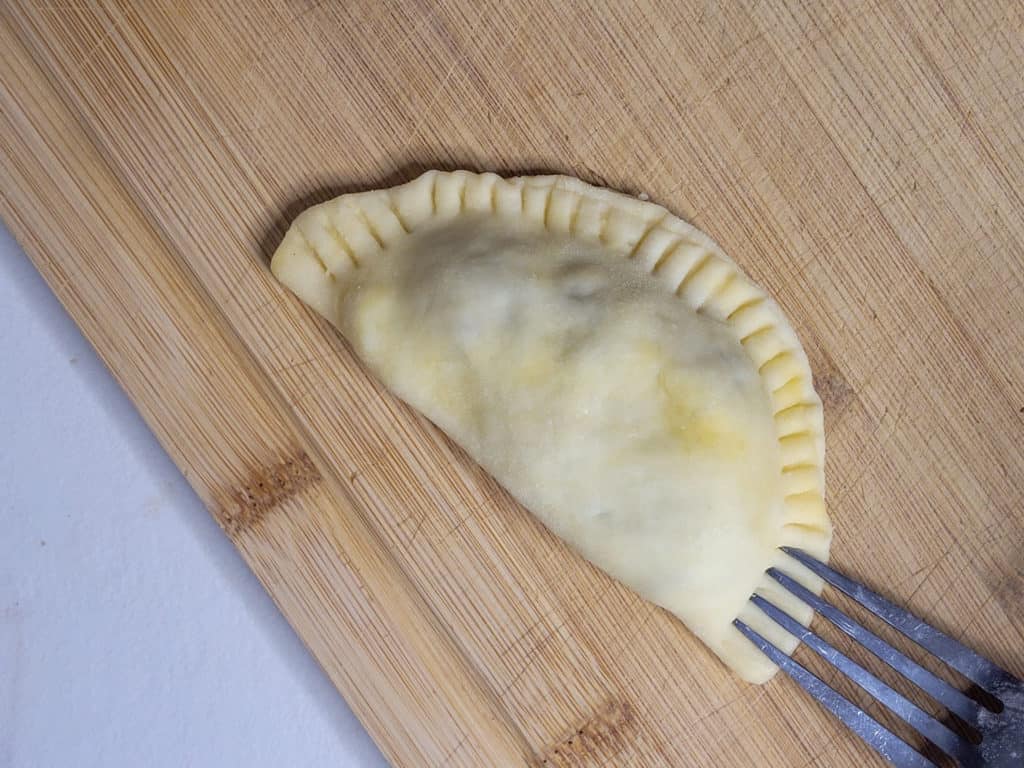
- Bake the Empanada
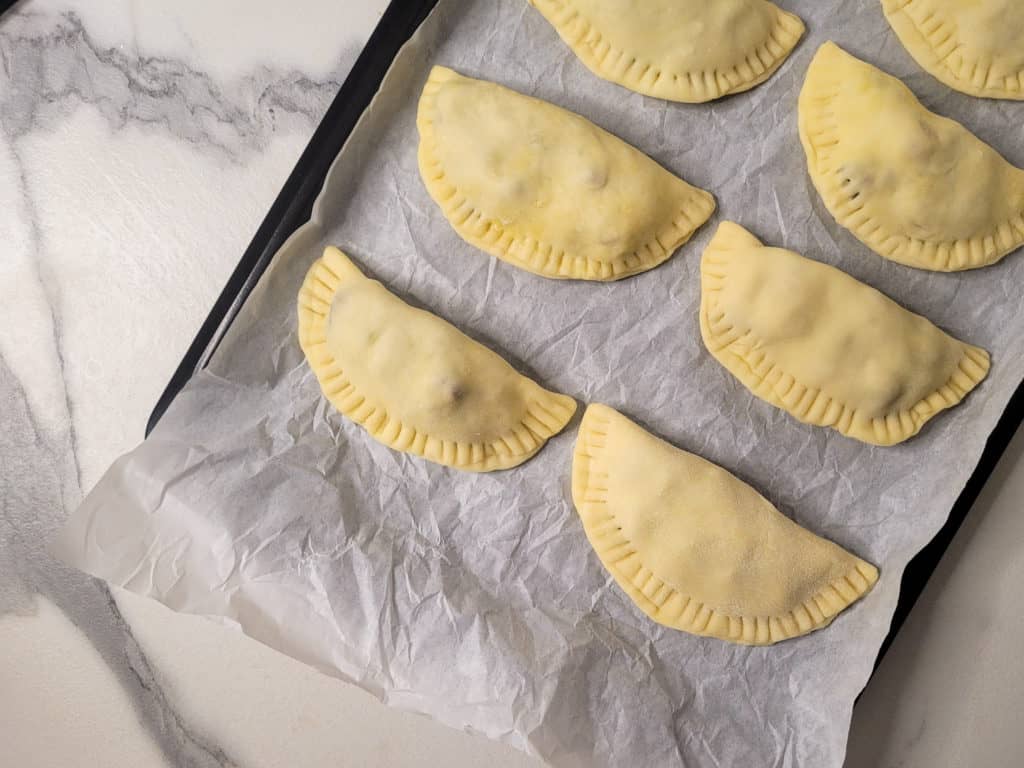
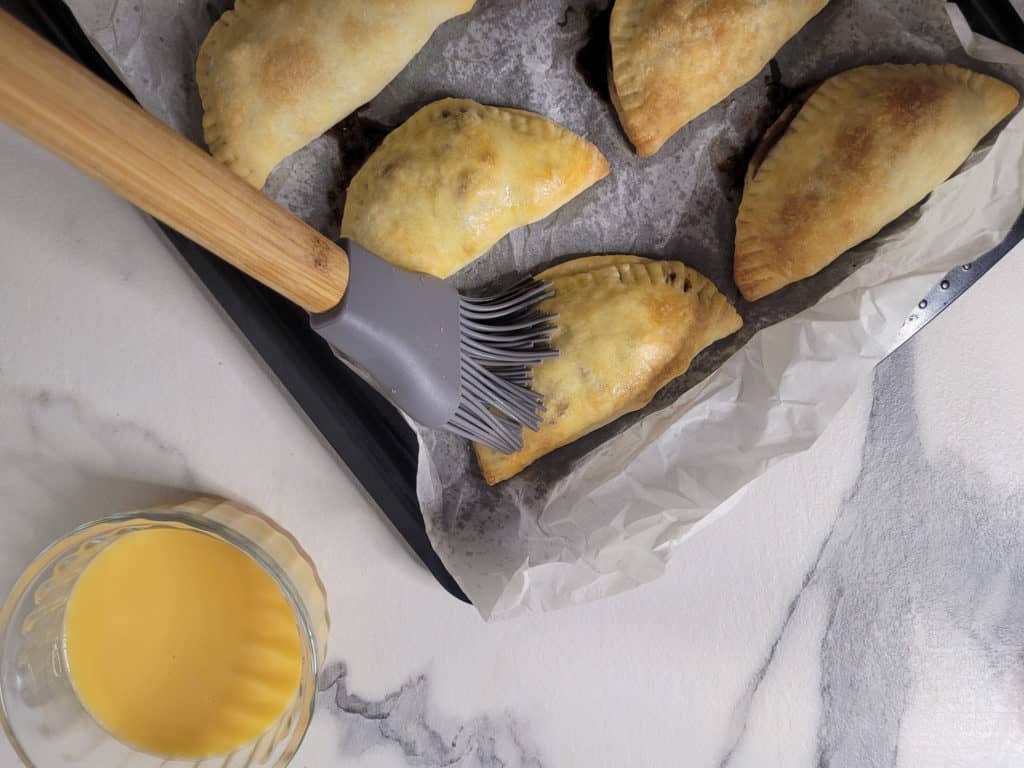
How to Serve
You can serve these after they cool down just a little bit. But you can also eat them at room temperature. If you have leftovers, you can put them in a container and refrigerate. Later on, you can microwave it for about ten to twenty seconds before consuming!
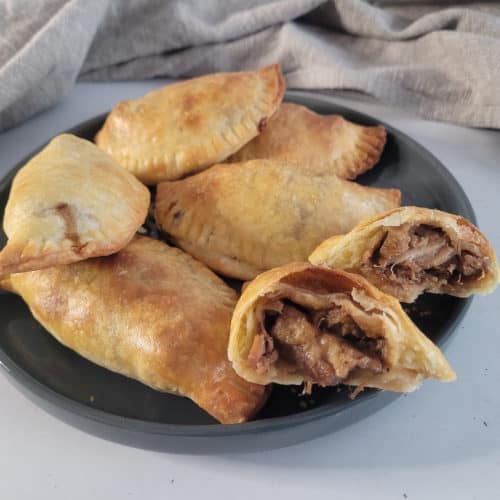
Filipino Adobo Empanada Recipe
Disclosure
The equipment and ingredients sections contain affiliate links to products I love to use as well as items that I personally believe make this recipe the best version of itself.
Ingredients
Filipino Adobo Filling
- 1 kg pork belly or shoulder or neck, cut into cubes
- 1 teaspoon crushed black pepper
- 6-8 garlic cloves, minced
- 8 tablespoon soy sauce
- 6 tablespoon vinegar
- 235 grams water or more as needed
- 6 bay leaves
- 2 tablespoon granulated sugar add 1 tablespoon during cooking to lessen salt if preferred
- 2 tablespoon cornstarch
Empanada Dough
- 400 grams all-purpose flour
- ½ tsp salt
- 140 grams unsalted butter, cubed
- 120 grams water
- 2 teaspoon apple cider vinegar
- 55 grams granulated sugar
Egg Wash
- 1 egg
- 1-2 tablespoon water
Instructions
Make Empanada Dough
- Mix the water and apple cider vinegar in a separate bowl. Set aside.
- In a food processor, add flour, sugar, and salt. Pulse for a few seconds. Add the butter cubes and pulse until the texture is sandy or the large chunks of butter have disappeared. Pour into a large bowl.
- Add eggs to the bowl of flour/butter mixture then slowly add the water mixture a little at a time until the dough becomes shaggy. Form a rough ball and wrap the dough in cling wrap. Refrigerate at least 1 hour.

Make the Filling
- In a container add the pork, soy sauce, minced garlic, and sugar and mix together. Marinate for at least 1 hour.

- Remove the pork from the marinade container. Set the marinade aside. Brown the pork in a pot with black pepper.

- Add the water, bay leaves, and saved marinade, then simmer for at least 1 hour.

- Remove the pork from the pot and shred with a fork. Set aside.

- Remove the bay leaves from the pot. Add cornstarch and whisk it in to remove clumps. Add the pork back to the pot and simmer until the sauce is thick.

- Place in a bowl to cool completely or allow it to cool in a refrigerator overnight. The filling will thicken even more in the cold, don't freak out from the clumpy result. It's part of the process!

Set Up Empanada Dough
- Cut the refrigerated dough in four equal sections. Work with one piece at a time. Take one piece and put it on a floured surface. Roll it out until it's about 1 cm thick.
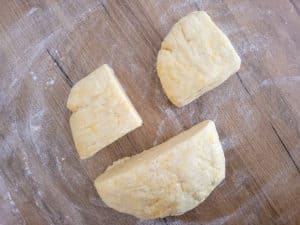
- Using a round cookie cutter, cut out circles. Place the pieces on a floured plate and cover then refrigerate again.

- Repeat the first three steps for the other 3 dough sections.
Assemble
- Place a spoonful of cooled adobo filling on the center of a cut out dough.
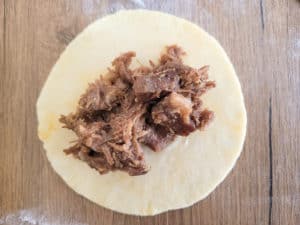
- Fold one half over to the other side to make a half moon shape. Using a fork, pinch down on the edges to seal the empanada.
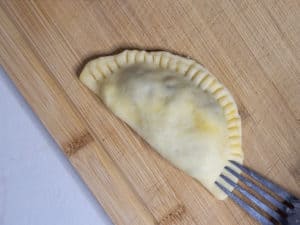
- Place the empanadas on a lined baking sheet and refrigerate for 20 mins.
Baking Empanadas
- Preheat the oven to 180°C (350°F). In the meantime, in a small bowl make an egg wash by beating one egg with 1 tablespoon of water. Set aside.
- Bake the empanadas for 20 minutes then pull them out of the oven.
- Brush the empanadas with the egg wash and bake for 5 minutes. Brush another layer of egg wash and bake for another 5 minutes.

- Allow to cool at least 10-15 minutes before eating.

Nutrition
Have You Tried This Recipe?
Simply rate the recipe by clicking on the ⭐️s on the recipe card. Have something to say? Please leave me a comment down below telling me what you think of this recipe.
Bonus: Let me and other readers know what you did to make this recipe your own - 💫 let's inspire each other!
Also, follow me on Instagram [@seesfoodwilltravel] and send me a DM with a picture of what you made. I would love to share and celebrate YOUR creation with our budding community 💞
Check out Sees Food, Will Travel on Pinterest and Facebook for more delicious updates.






Leave a Reply